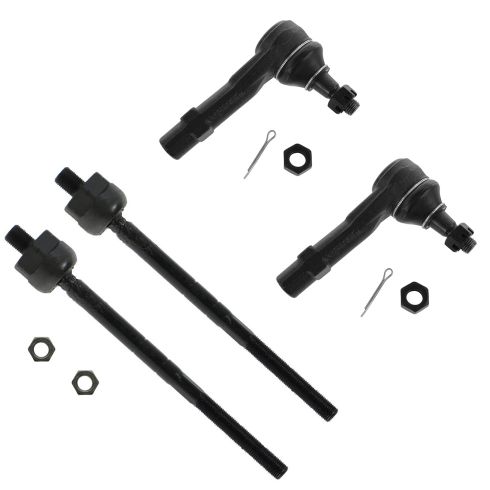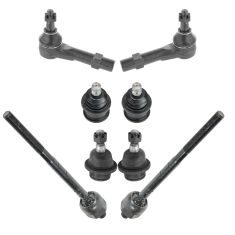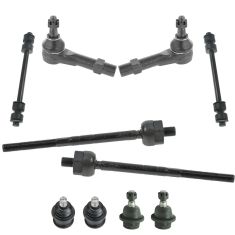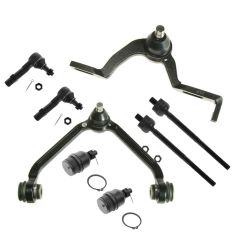1ASFK02167-Ford Mazda Mercury Front Driver & Passenger Side Inner & Outer 4 Piece Tie Rod Set TRQ PSA55096

Replaces
1999 Ford Explorer Front Driver & Passenger Side Inner & Outer 4 Piece Tie Rod Set TRQ PSA55096

Product Reviews
Loading reviews
4.75/ 5.0
12
12 reviews
Parts are better than shown
January 25, 2017
Great customer service, price and better than expected. Fast shipping as well. Thanks 1A, I'll be purchasing more parts.
Tie rod ends replacement
August 14, 2017
My 2002 4x4 Ford Ranger had worn/damaged tie rod ends.
These replacements came just in time, and to my surprise and delight came with grease fittings which I'm tickled about. Factory units were sealed :(
So now I can grease my tie rod ends after or before my overlanding/camping trips through the North GA mountains
Great parts
September 11, 2018
The parts were as described and had everything included that I needed to replace all the parts. The grease was there and so were the pins. All that was really missing was a new boot clamp for the inner tie rod
Perfect
December 27, 2018
The shipping timing was excellent. Two days after they arrived I installed them and they were a perfect fit. I certainly liked the price much better than if I had walked into a local parts store. I might have gotten only one part for the price that I paid for the whole front -ends worth of parts. Thanks for the great bargain! I don't shop anywhere else from now on!
tie rods
June 12, 2019
perfect purchase. love 1Aauto
October 21, 2019
GREAT PARTS AND GREAT PEOPLE WILL ORDER ANY TIME I NEED SOMETHING.
Well made and do the job
July 31, 2020
These parts are very solidly built, and the 1A video for installation was easy to follow. Two points to mention.
1. The included adjustment nut is very narrow and should not be used. Use your original.
2. There are packets of grease and lock rings included, but no direction in the video for their use. I used the grease for the tie rod end connections, and saw no application for the lock rings.
April 17, 2021
The parts came in about the time projected, fit perfectly, the outer tie rod boots were damaged but a quick e-mail and response back and no hassle they refunded the outer tie rods I will defiantly use again
??
June 8, 2021
This was a very easy install, and the parts seems durable. So far so good ??
Get her done!
March 22, 2022
Worked/fixed the problem!
2000 ranger inner outer tierods
December 8, 2022
I love this Product! Perfect fit easy installation great price
May 30, 2023
great
Customer Q&A
Every manufacturer has separate standards that they rely on as well as materials used.
You do not specify where your product comes from or who makes it.
Can you clarify such things for me?
January 26, 2018
10
Parts I've ordered and used from 1AAuto are not OEM but seem to meet those standards just the same as the three local parts vendors in my area. All are marked "made in China" but I've had no problems with failures of any kind and have used 1AAuto for over three years now.
January 29, 2018
James N
10
1A Auto is great
April 17, 2021
R I
Do these come with a grease fittings?
November 9, 2019
10
Thank you for your inquiry. These parts will come pre-greased and sealed, and will not include any zerk fittings. Please let us know if you have any further questions.
November 10, 2019
A C
I received a ketchup packet of grease and c-rings in the inner tie rod package? Nothing in the video about them. Are they necessary?
July 20, 2020
10
Thank you for your inquiry! That package of grease is for the inner tie rod joint where it inserts into the rack and pinion. You simply grease up the joints and install. If the inner tie rod came with locking rings the those get installed where the tie rods attach to the rack and pinion. When you go to do the job you will see how it is supposed to install. If you have any other questions feel free to contact us directly!
July 20, 2020
T I
Ford is a registered trademark of Ford Motor Company. 1A Auto is not affiliated with or sponsored by Ford or Ford Motor Company.
See all trademarks.










